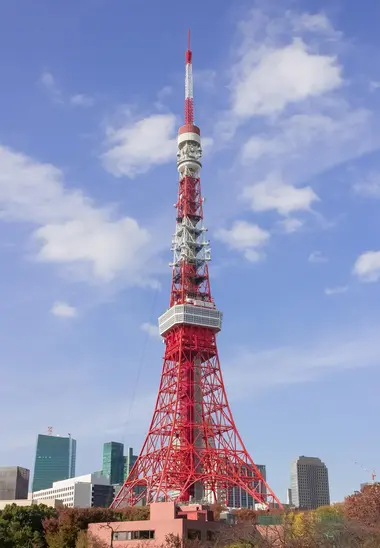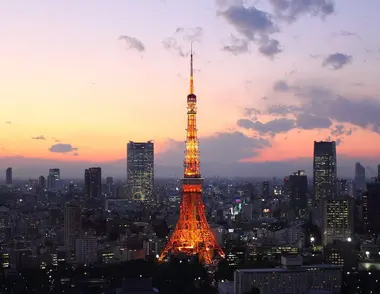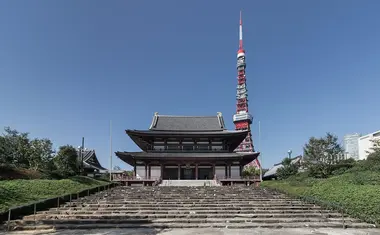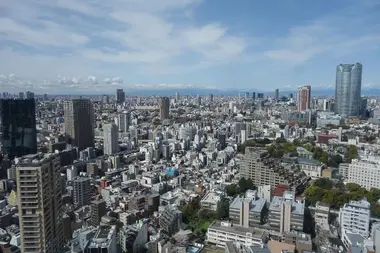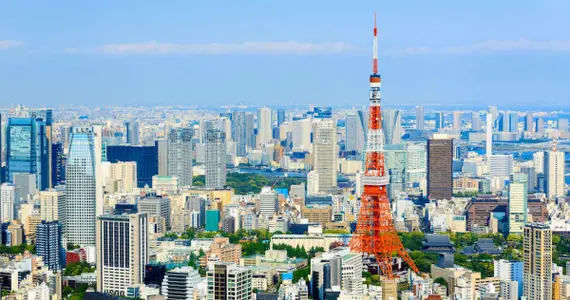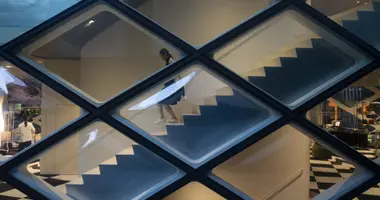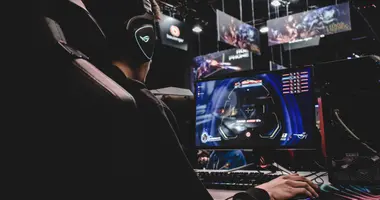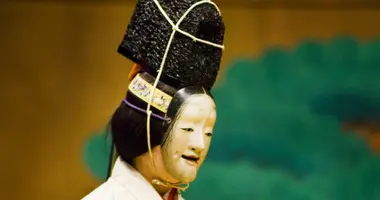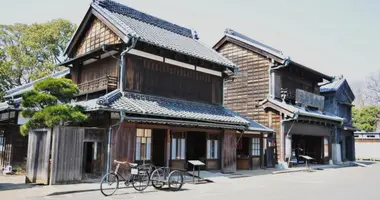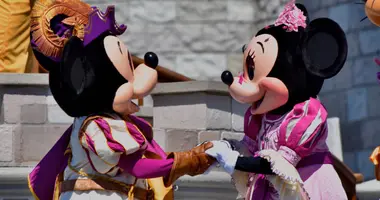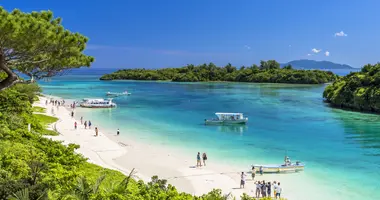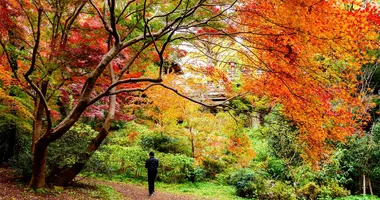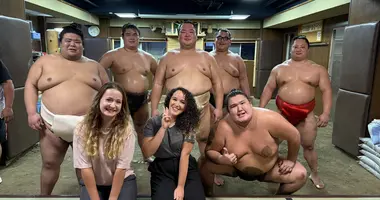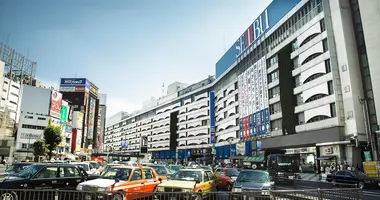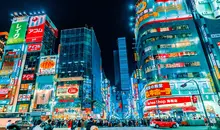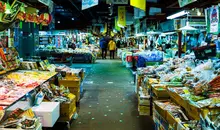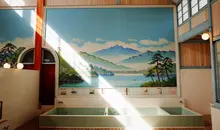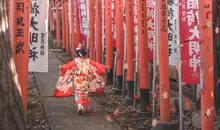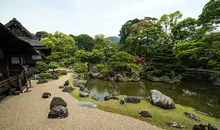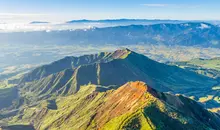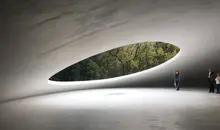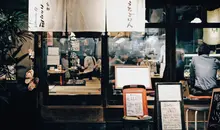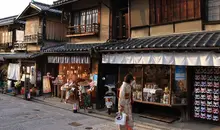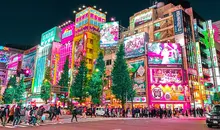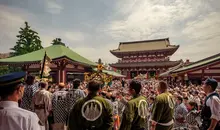Tokyo Tower
- Published on : 21/11/2019
- by : M.M. / J.R.
- Youtube
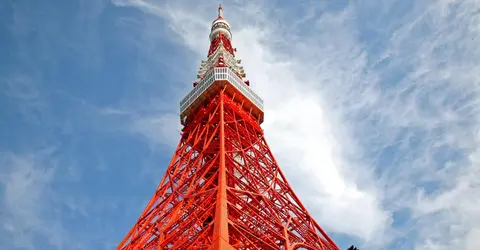
With its bright red hue and Eiffel Tower allure, Tokyo Tower is one of the symbols of the Japanese capital
DR
The Tokyo Tower, emblem of the Japanese capital
Tokyo Tower (東京タワー) is one of the Japanese capital's most iconic monuments. Built in 1958 and inspired by the Eiffel Tower, this 332.6-metre orange-and-white structure dominates the Tokyo skyline with elegance. Taller than its Parisian model but weighing less than half as much, it perfectly symbolizes Japan's rebirth after the Second World War. Located in the Minato district, in the heart of Tokyo, it serves a dual function: broadcasting television and radio signals while welcoming millions of visitors every year.
History and symbolism of the Tokyo Tower
The Tokyo Tower was inaugurated on December 23, 1958, at the height of Japan's economic renaissance. Its construction coincided with what some call Japan's post-war economic "miracle". Led by architect Tachū Naitō, a specialist in earthquake-resistant construction, the project aimed to create a broadcasting tower capable of covering Tokyo and the surrounding area, while symbolizing the country's modernization.
The story of the tower begins on February 1, 1953, when the public broadcaster NHK went on air for the first time, followed by the commercial broadcaster NTV. The rapid growth of the television network prompted the Japanese government to consider building a single antenna capable of covering the entire Kantō region, whose relatively flat topography lent itself well to this solution. The government also wanted this tower to go beyond Western references, such as the Eiffel Tower, from which it clearly draws its inspiration.
A fascinating fact is that around a third of the steel used in its construction came from American tanks damaged during the Korean War. In just 19 months, the tower was erected, originally topping out at 333 meters, making it the tallest free-standing tower in the world at the time. The total cost was 2.8 billion yen (about $8.4 million in 1958).
Since its construction, Tokyo Tower has become a major cultural symbol of Japan. It frequently appears in kaiju (monster) films such as Godzilla or Mothra, where it is often fictitiously destroyed, contributing to its establishment in the Japanese collective imagination. Its recognizable silhouette has become an integral part of the Tokyo skyline and the city's identity.
Architecture and technical features
The Tokyo Tower rises majestically to a height of 332.6 metres, 2.6 metres higher than the Eiffel Tower which served as its model. Despite this impressive size, it weighs just 4,000 tonnes, less than half the 10,100 tonnes of the Parisian Iron Lady, a testament to the ingenuity of its design and to Japanese technological advances.
Its structure rests on an 80-metre square base, supported by four main pillars. The tower was specially designed to withstand Japan's extreme environmental conditions. It can withstand earthquakes twice as powerful as the one that devastated Tokyo in 1923, as well as winds exceeding 220 km/h during typhoons. This exceptional resistance to earthquakes was demonstrated during the 2011 earthquake, when only the antenna at the top twisted slightly.
Its distinctive color, often perceived as red and white, is in fact"international orange" (the same shade as San Francisco's Golden Gate Bridge) alternating with white. This choice of colors is not aesthetic, but is in line with air safety regulations, enabling aircraft to easily spot the structure. To maintain these brilliant colors, 28,000 liters of paint are needed to cover the entire tower, an operation that must be renewed every five years.
The tower has six main floors and four elevators providing rapid access to the various observation levels. Its total surface area covers 23,100 m², offering numerous spaces for visitors and the technical installations required for its primary broadcasting function.
The different levels of the Tower : Foot Town and observatories
The Tokyo Tower offers visitors a complete experience thanks to its different levels, each offering a variety of attractions. At the base of the Tower is Foot Town, a four-level shopping mall located between the four main pillars. This complex is home to a multitude of stores, restaurants and attractions.
On the first floor of Foot Town, visitors can discover a large aquarium containing 50,000 fish, as well as the tower's official restaurant, the Tower Restaurant. The second floor is home to a number of restaurants, including McDonald's and Pizza-La. Until its definitive closure in July 2020, the 3rd, 4th and 5th floors were home to the Tokyo One Piece Tower, an amusement park dedicated to the famous One Piece manga, which unfortunately had to cease operations due to the drop in attendance caused by the coronavirus crisis.
Themain observatory, 150 metres above ground, is the second floor of the tower itself. It can be reached either by elevator or, for the more athletic, by climbing the 600 steps of a staircase. Those who choose this option receive a certificate for their effort! The observatory features a glass floor, the "Skywalk Windows", allowing visitors to contemplate the void beneath their feet at a height of 145 metres - an experience not recommended for those prone to vertigo!
On two levels, the main observatory also houses a concert hall, Club333, a café and the Tower Daijingu shrine. The latter, at an altitude of 150 meters, is the highest shrine of Tokyo's 23 special districts. It is reputed to grant divine favors to exam takers, but also to bring luck in love or protection on the road.
Last but not least, thespecial observatory (also known as the "Top Deck") stands 250 metres high, just below the main antenna. Renovated in 2018 after two years' work, it can be accessed via a glass elevator that travels the 100 metres separating the two observatories. This space offers an exceptional panoramic view of the city, allowing glimpses on a clear day of iconic landmarks such as the Rainbow Bridge and even, in the distance, the majestic Mount Fuji. To access this upper level, reservations must be made in advance, either on the tower's website or directly on site.
The illuminations: between tradition and modernity
The Tokyo Tower's illuminations are one of its most captivating aspects, transforming this already impressive structure into a veritable night show. Since its inauguration, the Tower has been equipped with a lighting system that has evolved over the years to offer spectators ever more magical experiences.
Until 1987, only the tower's edges were illuminated, creating a sleek silhouette against the Tokyo night sky. A turning point came when the Nihon Denpatō commissioned lighting designer Motoko Ishii to modernize the tower's appearance. In 1989, she installed a system of 176 spotlights that illuminate the tower according to a seasonal schedule: white in summer (July 7-October 6) with metal halide lamps, and orange the rest of the year with sodium vapor lamps.
To celebrate the tower's 50th anniversary in 2008, Motoko Ishii created a new, even more spectacular lighting system called "Diamond Veil". This system places white lights on the nodes of the structure, while a gradation created by spotlights illuminates the tower in blue at the antenna and red at its base.
In 2019, as Japan enters theReiwa era, the tower has benefited from even more sophisticated lighting. The new system, dubbed"Infinity Diamond Veil", uses 268 colored LEDs installed on 17 floors of the structure. Each LED can change color individually, allowing an almost infinite number of combinations and visual effects. This light show can be seen on Fridays and Saturdays from 8 p.m. to midnight, as well as during special events.
The illuminations also vary with the seasons and special events. On holidays such as New Year, or during the hanami (cherry blossom) season, specific themes are applied, creating unique atmospheres. In April 2011, a month after the earthquake on the Pacific coast of Tōhoku, the tower even displayed the message "GANBARO NIPPON" ("Hang in there, Japan") thanks to 8,400 light-emitting diodes, testifying to its strong symbolic role in important moments of the country's history.
These illuminations have become an integral part of Tokyo's night-time identity, attracting photographers and visitors who come to admire this ever-changing spectacle.
Communication and broadcasting functions
Although the Tokyo Tower is now known as a major tourist attraction, its primary function remains the broadcasting of television and radio signals. From the outset, it was conceived as a broadcasting tower, initially solely for the public broadcaster NHK.
The tower was only equipped with radio antennas in 1961, located above the first observatory some 200 meters above ground. Today, 14 signals are transmitted from its summit: 9 for television (including NHK, NTV, TV Asahi, Fuji TV) and 5 for FM radio (including Tokyo FM and NHK FM). This concentration of signals in a single structure has optimized media coverage of the Tokyo region and surrounding area, broadcasting to a radius of 150 km.
In addition to broadcasting, the Tokyo Tower fulfils other important technical functions. It is equipped with cameras to monitor the capital's road and sea traffic, thus contributing to urban management. It also houses Japan Railways antennas, helping to keep the rail network running smoothly.
However, with the emergence of taller and taller buildings in Tokyo, the quality of the digital signal emitted by the tower began to suffer in certain areas. This was one of the reasons behind the construction of Tokyo SkyTree, inaugurated in 2012 and rising to 634 meters. This new tower took over part of the broadcasting functions, particularly for digital signals.
Despite this partial transfer of activity, the Tokyo Tower remains active as a general broadcasting tower, and retains a reserve station for digital terrestrial television broadcasting. Its role in Tokyo's communications infrastructure therefore remains essential, even if its iconic silhouette is now more associated with tourism and the city's visual identity than with its original technical function.
Practical information for visitors
To make the most of your visit to Tokyo Tower, here's some essential practical information. The Tower is open daily from 9am to 10.30pm, with last admission at 10pm. However, it is advisable to check the opening times on the official website before your visit, as they may vary according to the season or during special events.
As for prices, there are several options. For the main observatory (150 meters), charge 1,500 yen for adults (approx. €10), 1,200 yen for high-school students and 900 yen for children. If you also wish to access the special "Top Deck" observatory (250 meters), the combined ticket costs 3,300 yen (approx. €23) for adults if booked online, or 3,000 yen on site. Reduced rates are available for children and students.
To get to Tokyo Tower, several public transport options are available:
- Oedo line: get off at Akabanebashi station (5-minute walk)
- Mita line: get off at Onarimon station (6-minute walk)
- Hibiya line: get off at Kamiyacho station (7-minute walk)
- JR Yamanote line: get off at Hamamatsucho station (15-minute walk)
For the best experience, we recommend visiting the tower on a clear day, ideally in the early morning to avoid the crowds, or in the evening to take advantage of the illuminations. On a clear day, you may even catch a glimpse of Mount Fuji in the distance. See our 5 places to see Mount Fuji guide for more information.
If you'd like to explore Tokyo further, consider combining your visit to the Tower with an excursion to nearby Zojo-ji temple, creating a striking contrast between tradition and modernity. For further information, please contact Tokyo Tower on +81(0)33433 5111 or visit their official website: https: //www.tokyotower.co.jp/en.html.
For a guided discovery of Tokyo including the Tower, we suggest the Tokyo Discovery half-day activity, or check out our other Tokyo Activities.
Tokyo Tower in popular culture and its environment
The Tokyo Tower occupies a special place in Japanese popular culture, appearing frequently in manga, anime, films and TV series. Its orange-and-white silhouette has become an instantly recognizable visual shorthand for "Tokyo" in many works.
In the kaiju (giant monster) films of the 1950s and 1960s, the Tower is often the target of creatures such as Godzilla, Mothra or King Kong. Its fictional destruction generally symbolizes urban chaos and the vulnerability of modern civilization to the forces of nature. More recently, the Tower has appeared in films such as "Lost in Translation" (2003), "The Fast and the Furious: Tokyo Drift" (2006) and popular anime such as "Sailor Moon", "Death Note" and "Neon Genesis Evangelion".
In 2015, the Tower strengthened its link with pop culture by hosting the first theme park dedicated to One Piece, a hugely popular manga and anime franchise in Japan. Although this attraction closed in 2020 due to the pandemic, it testifies to the Tower's importance as a place of expression for contemporary Japanese culture.
Beyond its cultural role, Tokyo Tower is part of an urban environment rich in contrasts. It stands majestically next to Zojo-ji temple, an important Buddhist temple originally dating from the 14th century. This juxtaposition of ancestral religious tradition and technological modernity creates a striking image that perfectly reflects the duality of Tokyo, a city where past and future cohabit harmoniously.
For visitors wishing to explore other remarkable vantage points over the city, there are other observatories in Tokyo, including Tokyo Skytree Tower (634 meters) and Tokyo City Hall and its free observatory. These different perspectives allow you to appreciate the immensity of the metropolis from different angles. For photography enthusiasts, we also recommend our guide to Tokyo's 5 most beautiful night views.
Classified as a "tangible cultural asset" of Japan in 2013, Tokyo Tower welcomed its 180 millionth visitor in 2018, on its 60th anniversary. It remains not only an essential visual landmark in Tokyo's urban landscape, but also a place of collective memory carrying Japan's modern history and aspirations.
Activities in Japan: Book your guided tour of Tokyo
Address, timetable & access
Address
Phone
+81(0)33433 5111Timetable
Open daily, 9am-10pm, last admission 9.45pm.Price
Main observatory: 1,200 yen for adults (€10)
Main observatory and combined special: on site 3000 yen (€25) for adultsAccess
Oedo line, Akabaneshi station (5-minute walk)
or Mita line, Onarimon station (6-minute walk)
Also JR Yamanote, Hamamatsucho station (15-minute walk).Website
https://www.tokyotower.co.jp/en.html
